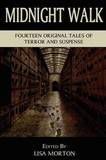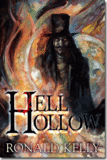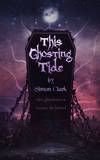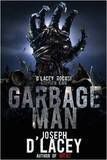The Fury / Jason Pinter
 Mira / October 2009
Mira / October 2009
Reviewed by: Martel Sardina
The Fury is Jason Pinter’s fourth novel featuring Henry Parker, a reporter for the New York Gazette. In this installment, Stephen Gaines, a strung out junkie, approaches Parker on the street outside his office and begs for his help. Parker is put off by Gaines appearance and pretends to be too busy at that moment to consider Gaines’ request. The next day, Parker regrets that decision when he learns that not only is Gaines his half-brother, but that he has also turned up dead. Why should he care about the death of a brother he never knew? That’s just one of the questions swirling in Parker’s mind. Things get worse and Parker is forced to care when he learns that his father is a suspect in Stephen’s murder.
As the plot unfolds, Parker’s quest to find out what kind of a man Stephen was in order to clear his father’s name leads to dark places. Other young men like Stephen start turning up dead. Some executed gangland style. Was Stephen merely an addict in trouble or was he involved in something bigger? And why do these murders remind Henry Parker of a string of homicides from the 1980s that he read about in Through the Darkness, a non-fiction book written by his mentor Jack O’Donnell? Parker would like to ask Jack that question. But unfortunately, Jack is on a leave of absence from the Gazette. Parker’s going to have to muddle through this one on his own.
The Fury was this reviewer’s introduction to Pinter’s Henry Parker series. There are a couple of dangers inherent to writing a mystery series. Authors have to figure out how to cope with two different types of readers — those who read the read the books in order and those who don’t. For loyal readers, authors have to write books that build upon the foundation laid in prior installments. For the newcomer, authors have to write books that work as standalones. There is a delicate balance of how much information from previous installments to include in order to ground new readers without being repetitive for those who have been reading since the beginning of the series. As a new reader to the series, this reviewer felt Pinter spent too much time rehashing historical events that were not integral to the plot of this particular story.
For example, Pinter tells readers that Parker does not have a close relationship with his father and gives some of the reasons why. James Parker is not a likable man to begin with and becomes even less so as the plot unfolds. Pinter’s failure to make an emotional connection concerning Henry’s relationship with his father makes it harder for the reader to believe that Henry Parker would want to help his father get out of this mess in the first place.
The Fury is being released this month and will be followed up in December 2009 with The Darkness. In The Darkness, Pinter does a better job of balancing the scales. The historical data carried forward to ground new readers is integral to that story. And the foundation laid in The Fury is taken to the next level. Having now read both books, this reviewer recommends reading The Fury if you are already planning to read both books. But if you have to choose between the two, hold on for the forthcoming review of The Darkness before you decide.
Purchase The Fury by Jason Pinter.
Midnight Walk / Edited by Lisa Morton
 Darkhouse Publishing / June 2009
Darkhouse Publishing / June 2009
Reviewed by: Vince A. Liaguno
The problem with horror, editor Lisa Morton theorizes in her introduction to Midnight Walk, is that the genre is trying too hard to cling to its old ways. She goes on to cite the thematic expansion of other literary genres while lamenting the fact that horror fiction seems firmly rooted in the Stephen King era, circa 1980, when evil settled into suburbia and hasn’t ventured out of the cul-de-sac since. Blame it on the housing market, but chances are that falling home prices aren’t so much the culprits as are lackluster imitation promulgated by a lazy publishing industry and the disconcerting lack of imagination of unchallenged readers. But that’s a discussion for another time.
What Morton sets forth in this tale of fourteen short stories – written primarily by writers residing in the American Southwest – is an expansion on the themes and settings of modern horror. From the Far East to the Indian ghetto, the backdrops of these tales offer distinct flavorings to the terrors at their core. And while some of the horrors might be familiar horror tropes at first glance – zombies, ghosts, malevolent faeries, urban legends – the cultural fine points Morton and company imbue each tale with will have you looking at these genre staples in an entirely new way.
Thematically, the stories in Midnight Walk run the gamut from grief and its many expressions (“Monsoon Devil”, “The Grieving Process”) to revenge (“Inside Out”, “The Bear Who Swallowed the Sky”) and from coming of age (“The Guixi Sisters”, “Silver Needle”, “The Measure of a Man”) to ecological horror (“The Tennatrick”, “The Svancara Supper Society”).
In “Monsoon Devil” by Armand Constantine, a grief-stricken husband haunted by the memories of his late wife seeks out a holy man with slithering tattoos who can summon the titular character – “a patron of things revealed and hidden” – so he can forget. The intriguing backdrop of New Delhi comes to vivid life in Constantine’s skilled hands, allowing readers a multi-sensory experience of the abject poverty and filth of the ghettos of India only glimpsed in shows like The Amazing Race and films like Slumdog Millionaire.
A resourceful female arson investigator comes face-to-face with wildfire-igniting monsters in John Palisano’s “The Tennatrick”, a clever literary response to the environmental disasters of the Southern California wildfires that have burned rampant these past few years. Palisano infuses a traditional matinee monster with an inventive, ecological horror response to the unfathomable destruction and power of Mother Nature.
Jodi Kaplan Lester introduces readers to “The Guixi Sisters”, three orphaned Chinese girls, who reunite with their orphanage caretaker years after each is adopted, in a beautifully rendered story of ancestral descent and ancient Chinese tradition. With vivid imagery and just a hint of surrealism that never takes the story out of its own reality, Kaplan crafts a marvelous tale evocative of The Joy Luck Club meets Children of the Corn.
Scottish folklore and shapeshifting faeries take center stage in Richard Grove’s atmospheric Halloween tale, “Silver Needle”, in which a thirteen year-old boy out on his first solo Halloween night outing runs afoul of some schoolyard bullies and his own heritage. Armed only with the titular instrument, hidden in the handcrafted costume his grandmother made for him, the boy must undergo a rite of passage into manhood like no another. Grove offers a solid twist on the coming of age tale, perfect for recitation to the kiddies before they venture out trick-or-treating.
For anyone burnt out on the glut of zombies in popular fiction these days, George Willis’ “The Measure of a Man” may be just the cure for your undead overload. Eschewing all sense of cliché, Willis crafts a marvelously imaginative South African-set tale in which a tribe of nineteenth-century Zulu warriors encounters a ship full of zombie invaders. Told from the POV of a young warrior-in-training who first spots the fog-enshrouded vessel from his mountain outpost, Willis’ story at once refreshes the zombie sub-genre while staying true to its basic tenets. A first-rate example of how something old can be new again in capable hands.
In Mike McCarty’s “The Grieving Process”, a husband struggles to understand his late wife’s final act, and goes to great lengths to numb his own sense of loss. McCarty’s brokenhearted protagonist rings true throughout in this melancholy story of the harmful effects of not wanting to let go. A very dark exploration of grief that will leave a pungent yet poignant taste of loss in the mouth.
In “Late Check-In” by Vince Churchill, a motorcyclist traveling cross-country to put distance between his impending divorce and his lingering feelings for his soon-to-be ex encounters a night of horror in a backwoods Tennessee motel. While the story has an impressive Tales of the Darkside twist ending that’s both creepy and satisfying, one’s left with the impression that Churchill missed a grand opportunity to explore race and region, only hinted at in the opening paragraphs.
A preening, self-obsessed male model learns a lesson that neither beauty nor ugliness is skin deep in Lisa Majewski’s “Inside Out”, a cautionary tale of one-night stands gone bad. From her deceptive opening paragraphs through to her Twilight Zone ending, Majewski ably blends the world of high fashion modeling with the darkness of black magic in this thoroughly satisfying revenge tale that will appeal to any lover ever jilted and anyone whose only crime is wanting to be loved for who they are and not what they look like in our increasingly superficial culture.
“Diana and the Goong-Si” by Lisa Morton is an exquisitely detailed story of a British noblewoman who travels to China in 1880 in search of her missing husband. Morton crafts a mesmerizing cross-genre tale that blends ancient Chinese culture with the undead and vampirism within an authentic historical context of the late 19th-century opium-for-tea trading industry between Britain and China. Infused with great humanity, “Diana and the Goong-Si” possesses the delicate period sensibilities of The Painted Veil and the hair-raising psychic vampirism elements of One Dark Night.
“Alley Oops” by Del Howison is one of those characters-on-a-collision-course stories in which good and evil are headed straight for one another. With its ripped-from-the-headlines brutality coupled with an ending you won’t see coming, Howison capably turns this simple story of petty crime into an ending of jaw-dropping irony.
Kelly Dunn blends the worlds of high stakes estate appraisal and biblical gods and demons in “The Mysterious Name”, a Needful Things-esque tale of false gods and the lengths people are willing to go in the name of wealth. Despite its sometimes heavy-handed commentary on the trappings of materialism, Dunn creates a hallucinogenic tale of greed and the price others pay for it in this story of haves and have-nots in the small, affluent town of Logro.
R.B. Payne’s “Eddie G. at the Gates of Hell” explores the devastating effects of schizophrenia on the family and self in this visceral, disturbing tale of doppelgangers, dead bodies, animal slaughterhouses, and a curious monster fly set against the backdrop of the arid Southwestern desert and an abandoned roadside tourist trap along the legendary Route 66.
A Native American print-shop worker invokes American Indian folklore to seek revenge on an unscrupulous boss in whose eyes all employees are not created equal in Jason M. Light’s “The Bear Who Swallowed the Sky”, an intriguing allegorical tale of workplace discrimination that blends folklore with Wizard of Oz imagery.
In Joey O’Bryan’s closer, the futuristic “The Svancara Supper Society”, a global food crisis stretches the ethical boundaries of scientific research as a group of researchers use questionable means to uncover the secret ingredient of palatable synthetic food. Cloning is the spice of life (and death) in this grim, disturbing tale of a society on the verge of ecological disaster. O’Bryan successfully keeps the science elements of the story in check, using them to lend authenticity but never letting them overpower the horror at hand.
Editor Morton skillfully keeps the proceedings from devolving into a poor man’s literary equivalent of the Travel Channel by keeping her eye on the ball. Horror first is the motto here, with culture and setting enhancing rather than overwhelming. She pluckily promises “more than the same old crap” in her introduction, and she delivers the goods through the capable pens of the writers whose stories she’s selected for this engaging anthology. Interestingly, among standouts like Kaplan’s “The Guixi Sisters”, Constantine’s “Monsoon Devil”, and Willis’ “The Measure of a Man”, Morton’s own offering is a treasure in its own right that demonstrates an editor who understands her own mission; an anthologist whose writer roots help firmly ground the collection.
Amazing what a trip outside our comfort zones will do for the soul’s sense of perspective. In Midnight Walk, Morton assembles a solid group of writers who mine fertile soil to create genuinely unique horror outings. Even those who stay closer to home take what might otherwise appear as unremarkable formulaic horror at face value and run it through the literary car wash, where it emerges sparkling and refreshed, unsullied by cliché or convention.
Exercise those flabby horror muscles and take a stroll with fourteen horror writers who understand what healthy horror is. With all natural ingredients, no imitation flavorings, and great taste, Midnight Walk is literary tapas for the horror enthusiast’s soul.
Purchase Midnight Walk, edited by Lisa Morton.
Hell Hollow / Ronald Kelly
 Cemetery Dance / November 2009
Cemetery Dance / November 2009
Reviewed by: Blu Gilliand
Ronald Kelly’s Hell Hollow is the bastard son of Robert McCammon’s Boy’s Life and Wes Craven’s original A Nightmare on Elm Street, a quick-moving mashup of the classic coming-of-age, fish-out-of-water story and old-fashioned supernatural terror tale.
Keith Bishop is a spoiled boy living in Atlanta, a latch-key kid whose parents can’t tear their eyes away from the next rung of the corporate ladder long enough to discipline their son. Events conspire to sentence Keith to a month-long stay with his seldom-seen grandfather, Jasper McLeod, in the tiny Tennessee town of Harmony. Harmony is the quintessential small Southern town, populated with hard-working farm families, deep woods, pastures, and, of course, a run-down general store. In other words, it’s the last place a city boy wants to be.
Keith reluctantly falls in with a group of friends that include his cousin Rusty, crush-worth Maggie, and wheelchair-bound Chuck. When Keith wins a bet that forces his new acquaintances to help him explore a mysterious section of the woods known around Harmony as Hell Hollow, the foursome find themselves face-to-face with the evil that has been hidden there for nearly a hundred years – an evil that has begun to stir again.
Few can bring a Southern summer to life the way Ronald Kelly does in Hell Hollow. He perfectly captures not only the essence of a hot August day, but also what it’s like to be young, free, and restless on such days. Endless bicycle rides, swimming in a cold creek, sneaking a juicy watermelon from a neighbor’s field – it’s all vividly portrayed. Kelly also perfectly captures the dark undercurrent that runs through the town. Flashbacks tell the story of what’s in the Hollow and why it’s been dormant for so long, as well as revealing its connection to newcomer Keith.
Hell Hollow clocks in at nearly 500 pages, but it’s no slog – Kelly’s prose is lean and precise, the mark of an author steeped in the tradition of oral storytelling. He manages to paint vivid pictures with spare strokes, something any writer will tell you is no easy feat.
There are a couple of stumbling blocks along the way. A side plot involving a hitchhiking serial killer named Slash and one of his intended victims feels shoehorned in, which is problematic considering how big a role the characters play in the overall story. Kelly loses his footing a bit when he takes the story out of Harmony and into the children’s dreams – he just doesn’t quite capture the landscapes there the way he does those of Tennessee. And toward the end of the book, the villain lapses into some unfortunate Scooby-Doo bad guy dialogue of the “meddling kids” variety.
However, in the grand scheme of the story, these are minor distractions. The first two-thirds of the book are marvelous, and the downshift in quality of the last third is slight enough that it doesn’t damage the experience as a whole. If you’re from the South, much of this book is going to ring absolutely true for you. If you’re not, then come along and see what you missed.
Purchase Hell Hollow by Ronald Kelly.
This Ghosting Tide / Simon Clark
 Bad Moon Books / September 2009
Bad Moon Books / September 2009
Reviewed by: T.E. Lyons
Brit Clark has plenty of fans, and their confidence in him is justified here, although perhaps not as intended: Whether this project was a novel-draft that broke apart, or multiple short-story ideas that have been sewn together, the result showcases a veteran’s skill for salvaging modest fragments. This novella gets by on some unusual charms. It is not so much a classic horror story as an adventure that has dollops of shudder-inducing grue and other dark elements. Add some quick cuts, short-timed threats, and other busyness that keep this moving at an unexpected but reader-friendly pace.
At the center of this tale is a ghost-hunting team that has finally tripped onto the exact thing they’ve been looking for, and finds that it contains every one of their greatest fears. The team is a motley sort, cutting across social strata — and even further: The eccentric nobleman who bankrolls the project is bringing along a large monkey as a travelling companion. The employees are all desperate to one degree or another. Our point-of-view character, Kit, is a bankrupted wannabe-filmmaker. Another of the team is a middle-aged raconteur who sees himself as the perfect know-it-all huckster to placate the naïve and generous benefactor. From what I know about Simon Clark, there is a little bit of self-joshing in how he drew this character.
The plotline moves determinedly from incident to incident. We see the group’s modus operandi as Kit digs up a grave from the Victorian era, prodded by a dubious rationale. The tension of the scene escalates, and then bursts into a gripping and claustrophobic scene during which we see how the group reacts to stress. Their fractiousness has barely receded to the background when they stumble upon a locale that is haunted on a massive scale. An evil countenance seems to have harnessed the blind rage of all that the sea can throw onto anyone who draws near. Our ghost-hunters now have a phenomenon that they can document, therefore justifying all their efforts — but they become fascinated to the point that they lose full understanding of the danger before them.
Clark tries to convey the encounters with spirits as electrical jolts and moments when senses are stolen or distracted, instead of the traditional ghost-story moodiness and deliberate ethereal atmosphere. His choices work well alongside the brevity and constant movement here, leading to some memorably visceral moments. The reader may benefit by considering this novella as a stylistic descendant of John Wyndham’s pull-together-against-the-mounting-evil procedural thrillers like The Day of the Triffids (for which Clark wrote a sequel). But upon closing This Ghosting Tide, it becomes difficult to justify the investment that was made in setting up locales and personae. Even for a lightweight read, the ending was seriously wanting. The characters were no mere stick figures, but they (and the reader) are left off with even less than the shorthand by which they were first presented.
Purchase This Ghosting Tide by Simon Clark.
Garbage Man / Joseph D'Lacey
 Bloody Books / May 2009
Bloody Books / May 2009
Reviewed by: Martel Sardina
Garbage. Refuse. Trash. It doesn’t matter what we call it or where it ultimately ends up. All that matters is that when we dispose of unwanted things, they disappear from our lives forever. But what if some of those things decide to come back?
Mason Brand knows about ridding himself of unwanted things. He’s given up fame for a simpler, hermit-like life. He lives within sight of the town’s landfill and spends his time reconnecting with nature. When he heeds nature’s calling, he has no idea where the journey will take him and what kind of monster he is about to unleash.
Agatha “Aggie” Smithfield wants nothing more than to escape Shreve but she needs Mason’s help to do it. She dreams of becoming a professional model and believes her beauty is her ticket out of this dead end town. Having a portfolio shot by acclaimed photographer, Mason Brand, will certainly seal her fate. Mason isn’t about to give away his services for free. Is Aggie willing to pay his price?
The town of Shreve is filled with unwanted things, not just garbage, but secrets and lies. Two couples are torn apart. While new relationships are born from the ones that have ended, there will never be a happy ending so long as past truths are ignored.
D’Lacey’s premise is reminiscent of the classic 1958 horror movie, The Blob. Much like the blob, the monster in Garbage Man starts off as a small creature but then grows larger as it “eats” its victims. The “birthing” of the first monster is explained in great detail. As the story progresses, additional creatures begin attacking the town, whether or not they are the offspring of the first monster or entities unto themselves is unclear.
D’Lacey’s writing style has been compared to that of Stephen King’s. There is a lot of set up in the first hundred pages of the novel in which a number of potentially interesting characters and subplots are introduced. The downside of having such a large cast of characters is that it becomes hard to fully develop and integrate each character’s story arc into the plot. Some characters were killed off prematurely and some of the more interesting subplots were left to wither on the vine. There were also some minor problems with questionable character motivations and tense changes switching from past to present and back. D’Lacey does a good job with sensory description — especially sense of smell. At times, having the olfactory senses engaged was what made the action horrific.
The most compelling reason to read Garbage Man is the fact that D’Lacey challenges readers to think about a subject (garbage disposal) that most of us take for granted. What would we really do if D’Lacey’s vision became a reality? What can we do to prevent it? If reading this novel doesn’t make you at least stop for a moment to think about recycling or reducing consumption, I don’t know what will.
Purchase Garbage Man by Joseph D’Lacey.
Shades of Blood and Shadow / Angeline Hawkes
 Dark Regions Press / August 2009
Dark Regions Press / August 2009
Reviewed by: Martel Sardina
Hawkes opens each story with skill, building her worlds and guiding her characters through them. She matches her prose style to the time of the story, giving each an authenticity through her word choices and dialogue. The journeys set out for readers are enjoyable. It is easy to get caught up in the action. The hard part for this reviewer was arriving at the end. In many cases, the endings came too quickly.
Take, for example, “The Highwayman of Epping Forest.” Wyatt, an abused orphan, grows up to become a thief and cold-blooded killer of the people who pass through Epping Forest. He pays an innkeeper for a room in a safe house and takes up with his daughter, Catherine. After robbing and killing a man on Samhain, Wyatt encounters a ghoul and is tormented by ghosts of his other victims. Hawkes reeled me in but then lost me by killing a key character off and ending the story three paragraphs later.
In “Opportunity”, Hawkes does a great job with the set-up. Dr. Conrad Higgins uproots his family from a comfortable life in England to take a job in India. Of course when Higgins gets there, he gets more than he bargained for when his nurse claims vampires are responsible for one of their patient’s wounds. The story builds to the climax beautifully, only to be ended in a few short paragraphs that lacked the emotional depth that was present in the preceding pages.
The best story in the collection is “The Piper of Glamis Hill.” Bess, a young Scottish girl, awaits the return of her true love, Cameron Campbell. Unfortunately, the younger Lord Stone wants Bess for himself but he cannot marry a simple farm girl so long as his father, Lord Stone, the elder, and Cameron Campbell are still alive. The elder Lord Stone is dying. And the younger Lord Stone is not about to let Cameron Campbell stand in his way. But what about what Bess wants? Choosing between the two men comes with a heavy price. Who will Bess choose?
History buffs and readers who like a supernatural twist are bound to love Shades of Blood and Shadow. From the retelling of a biblical event to Mayan legends and around the world to the Ukraine, Hawkes puts a unique spin on whatever time period and subject matter she’s covering. Despite the reviewer’s qualms about some of the stories’ endings, there are still gems to be unearthed in this collection. “The Piper of Glamis Hill” was just one of them.
Purchase Shades of Blood and Shadow by Angeline Hawkes.
Personal Demons (The Jake Helman Files) / Gregory Lamberson
 Medallion Press / October 2009
Medallion Press / October 2009
Reviewed by: Blu Gilliand
Personal Demons starts out with a lot of promise. Jake Helman is a New York City detective working a high-profile serial killer case. After a visit to a particularly gruesome crime scene, Helman retreats to a local cop-friendly watering hole, snorts some cocaine, and walks out of the restroom into a burglary in process. Seconds later the two perps are gunned down and Helman is battling an adrenaline-and-coke-fueled panic attack. Later, when pressed for a hair sample by the Internal Affairs officers investigating the incident, Helman turns in his shield and walks away from the job.
Sounds like a great start to a good procedural, right? Well, at this point, the story takes one of many twists. Helman is immediately tapped to head the security division of Tower International, a controversial corporation involved in genetic experiments and bioengineering. Protesters surround the company’s high-rise headquarters on a daily basis, and founder Nicholas Tower has dropped from public view. Helman soon learns Tower’s whereabouts as he meets the eccentric old man on his first day of the job, and is quickly ushered into the inner circle of the company.
Okay, still good. We’ve got a former cop working for a company involved with controversial genetics. Meanwhile, there’s a serial killer on the loose, and Helman quickly suspects there may be a connection between his former target and his current boss.
But, author Gregory Lamberson says “let’s twist again.” Soon supernatural elements are introduced into the story. There is talk of the possible capture and storage of souls. We learn that some of the picketers that frequent Tower International may, in fact, be ghosts. Then bodies start to melt, a strange globe full of snake-like creatures with vaguely human characteristics is discovered, and a couple of well-known Biblical characters make the scene. Oh, and one high-ranking Tower official makes the statement that she once “interned with a coven of witches,” and confesses to protecting the company to some extent with spells.
Lamberson should be credited for trying to take familiar ground and stretch it in new directions. The problem is he introduces too many disparate elements, and the plot becomes muddied in a hurry. Genetic engineering, demonic possession, the living dead, ethics, witchcraft, cloning — it’s all competing for time in what needs to be a tight narrative in order to work.
The book moves at a brisk pace, and Lamberson does manage to create some suspense in certain sequences. But there’s just too much going on for readers to get a grip on the story. This could have been a solid police procedural, a thought-provoking thriller, or an atmospheric horror story. Instead, it tries to be all of these, and ends up being none of them.
The book ends with a suggestion that there may be more Jake Helman stories in our future. (The book’s subtitle, “The Jake Helman Files,” suggests the same.) There’s certainly potential in the character for an interesting series, if Lamberson will narrow his focus just a bit in future tales.
Purchase Personal Demons (The Jake Helman Files) by Gregory Lamberson.




